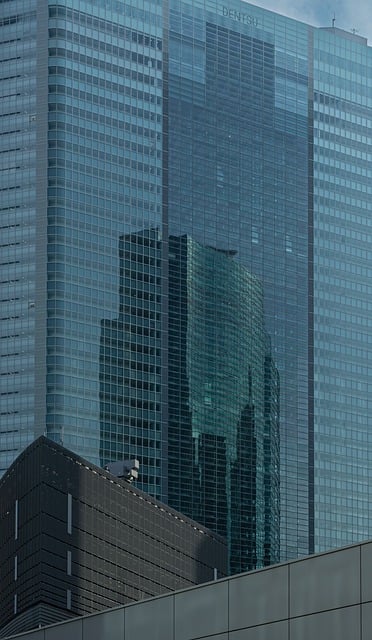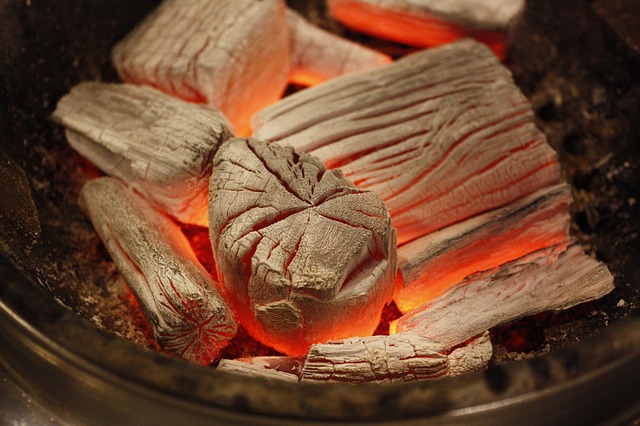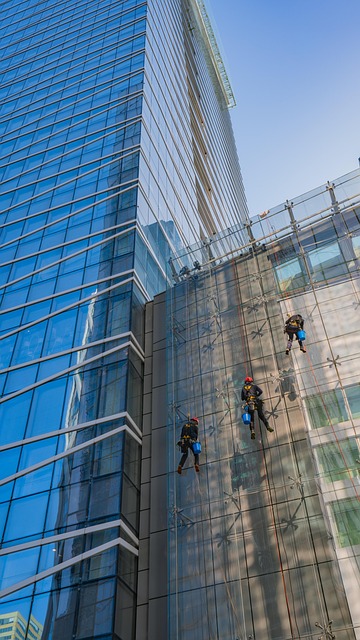Glulam (glued laminated timber) is a modern construction game-changer offering enhanced safety and design flexibility through its superior strength, stability, and favorable strength-to-weight ratio. Key considerations include understanding material properties for effective design, implementing rigorous safety measures during assembly, ensuring structural integrity, prioritizing fall protection in high-altitude projects, addressing fire safety concerns with fire-retardant treatments, leveraging environmental benefits of sustainable production practices, and achieving both structural soundness and ecological harmony.
Glulam, a modern structural engineering marvel, is reshaping construction with its strength and versatility. This innovative building material, an engineered wood product, offers unparalleled performance in modern architecture. However, navigating Glulam’s potential requires a deep understanding of its unique properties and stringent safety standards. From workshop protocols to high-altitude fall protection, this article explores the critical considerations for ensuring safe Glulam construction.
- Understanding GLULAM: Materials & Properties
- Workplace Safety Protocols for GLULAM Construction
- Engineering Design Considerations for Structural Integrity
- Fall Protection Measures in High-Altitude GLULAM Build
- Fire Safety and Prevention in GLULAM Structures
- GLULAM's Environmental Impact: Sustainable Practices
Understanding GLULAM: Materials & Properties
Glulam, or glued laminated timber, is a modern engineering material that has revolutionized construction safety and design. It’s created by gluing together several smaller pieces of wood to form larger, stronger elements. This process enhances the structural properties of timber, making it suitable for high-end applications such as bridges, buildings, and other structures where strength and stability are paramount.
The materials used in glulam construction are primarily high-quality softwoods known for their dimensional stability and resistance to warping. These include species like spruce, pine, and fir (SPF). The laminating process bonds these woods together under high pressure and temperature, creating a composite material with exceptional strength-to-weight ratio and resistance against bending, shearing, and buckling. Understanding glulam’s materials and properties is crucial when considering its design considerations for wind load, as well as when comparing its cost and efficiency to traditional construction methods.
Workplace Safety Protocols for GLULAM Construction
In GLULAM construction, ensuring workplace safety protocols is paramount due to the material’s unique properties and structural benefits. Given that glulam (glulam construction speed and efficiency) is a lightweight yet incredibly strong engineered wood product, it enables faster assembly compared to traditional framing methods. This rapid construction process necessitates rigorous safety measures to mitigate risks inherent in working at heights and with heavy materials. Contractors must adhere to strict guidelines for personal protective equipment (PPE), including hard hats, safety glasses, and fall-arrest systems when handling glulam, especially during installation on high-rise projects.
The structural advantages of glulam framing (glulam for sustainable infrastructure) also bring both opportunities and challenges. Its dimensional stability makes it suitable for complex designs, but it requires proper training to handle and install accurately. Regular safety inspections and well-maintained equipment are essential to prevent accidents during construction. By prioritizing these safety protocols, contractors can leverage the glulam framing advantages for contractors while ensuring a secure working environment and project success.
Engineering Design Considerations for Structural Integrity
When designing with glulam (glulam architecture design trends), structural integrity must be a paramount consideration. Engineers must account for factors like span, load capacity, and material properties to ensure that each glulam component supports its intended load without failure. Thorough analysis and detailed engineering plans are essential to guarantee the safety and durability of structures incorporating this innovative material.
In modern wood architecture, glulam stands out for its strength-to-weight ratio and aesthetic appeal. This makes it a popular choice for spanning wide areas, enabling designers to create dramatic interior spaces with minimal support (glulam in modern wood architecture). However, achieving optimal performance requires adhering to safety standards, understanding the material’s behavior under various loads, and employing appropriate detailing techniques throughout construction, thereby underscoring the critical role of engineering design considerations in glulam construction.
Fall Protection Measures in High-Altitude GLULAM Build
When constructing high-altitude GLULAM (Glulam) buildings, ensuring fall protection is paramount to safety. As GLULAM applications in commercial buildings continue to gain popularity for their structural integrity and aesthetic appeal, especially in complex designs, proper precautions must be taken during construction. These structures, often featuring glulam options for curved structures, present unique challenges due to their height and intricate shape. Therefore, comprehensive fall protection systems are crucial to mitigate risks.
Implementing robust guardrails, safety nets, and personal fall arrest systems is essential for GLULAM design considerations for wind load and other environmental factors. With careful planning and adherence to building codes, these safety measures can ensure that construction crews are protected while working at heights. This approach not only guarantees the well-being of workers but also contributes to the successful and safe completion of high-altitude GLULAM projects.
Fire Safety and Prevention in GLULAM Structures
Fire safety is a critical aspect of GLULAM (glue-laminated timber) construction, considering the material’s unique properties. Unlike traditional timber, GLULAM offers excellent dimensional stability and strength, making it a popular choice for modern architectural designs. However, its high thermal conductivity poses a potential fire hazard if not managed properly. To mitigate this risk, fire-retardant treatments are often applied during the glulam manufacturing processes to delay the spread of flames and reduce smoke production.
GLULAM’s structural integrity and ability to withstand extreme conditions make it suitable for various applications in sustainable infrastructure. By adhering to stringent safety standards, architects and engineers can harness the benefits of glulam engineering for unique designs while ensuring fire safety. Proper maintenance, regular inspections, and compliance with building codes are essential to prevent fires and protect occupants in GLULAM structures.
GLULAM's Environmental Impact: Sustainable Practices
GLULAM (Glued Laminated Timber) construction offers a compelling environmental story. Its production process leverages sustainable forestry practices and renewable resources, contributing to reduced carbon footprints compared to traditional building materials. The use of glulam promotes responsible forest management since it relies on well-managed forests for its raw material, ensuring a constant supply while preserving ecosystems.
In the context of glulam applications in bridge building and curved structures, sustainability is not just an afterthought but a core consideration. GLULAM options for sustainable infrastructure are gaining traction due to their low environmental impact. These structures offer longevity, reducing maintenance needs over time, further minimizing their ecological footprint. By embracing glulam, builders can create both robust architectural marvels and harmonious connections with the natural environment.
Glulam construction, while offering innovative structural solutions, demands stringent safety standards throughout every stage. From understanding material properties and adhering to workplace protocols to ensuring structural integrity and implementing robust fall protection measures, each aspect plays a critical role in mitigating risks. Moreover, addressing fire safety and embracing sustainable practices are integral to the responsible use of glulam. By prioritizing these safety standards, industry professionals can harness glulam’s potential while upholding the highest levels of worker protection and environmental stewardship.







